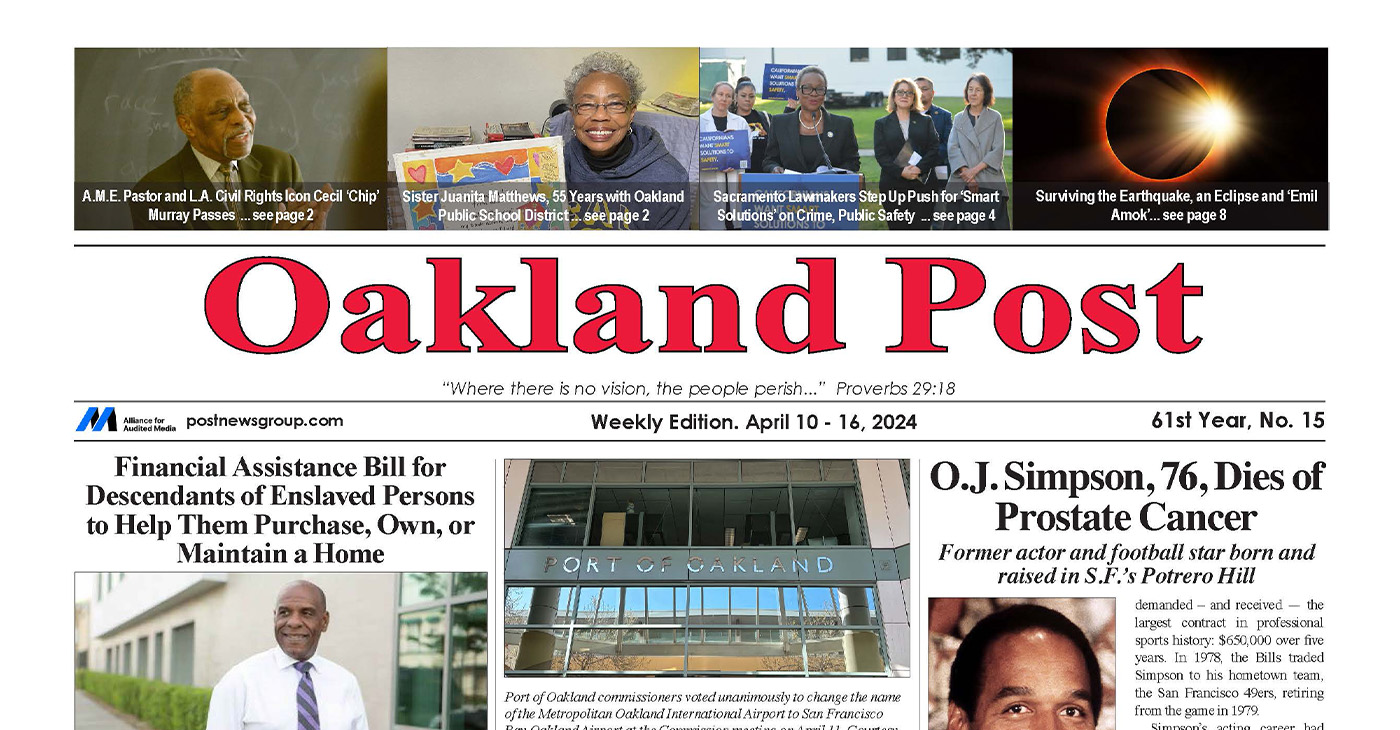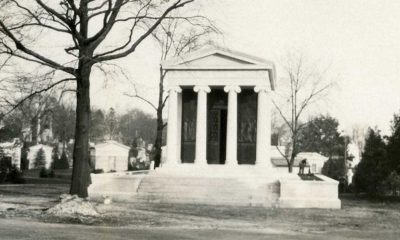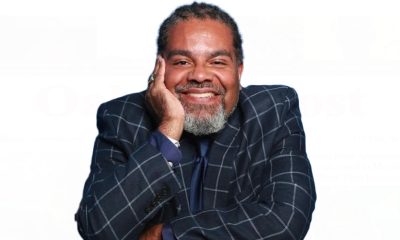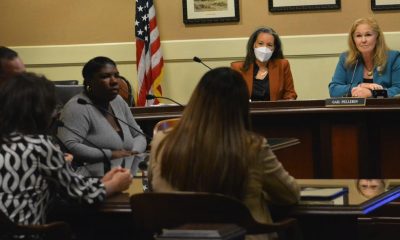Black History
Hamline’s Black Student Collective 50 years strong
MINNESOTA SPOKESMAN-RECORDER — As the first student of color organization in the state’s oldest college, Hamline’s Black Student Collective has served to empower some of the state’s most prolific Black leaders and activists
As the first student of color organization in the state’s oldest college, Hamline’s Black Student Collective (BSC) has served to empower some of the state’s most prolific Black leaders and activists — including Juanita C. Freeman, Washington County’s first Black judge, and Anika Bowie, vice president of NAACP Minneapolis and current candidate for St. Paul City Council.
Now, the BSC is set to celebrate 50 years of service this weekend.
Black student unions across the country have proven to be effective support systems for Black students entering higher education. Whether first-generation or part of a familial legacy, Blacks entering college face significant challenges and disparities in course-readiness and access to resources.
Only 47 percent of Black students earn traditional “four-year” degrees within six years, while Whites graduate at a rate of 67 percent, according to the National Student Clearing Research Center. That’s in addition to other intangible social, mental and emotional issues that may arise while competing for grades within a population that does not always feel welcoming to them.
The Hamline student of color population has doubled over the past 20 years, now boasting 30 percent students of color, nine percent of whom are Black. While the look and landscape of the BSC have evolved over the years — changing its official name from P.R.I.D.E. (Promoting Racial Identity Dignity & Equality) to the Black Student Collective — the need for support is still there.
“We’re still in the middle of a civil rights situation,” said Carlos Sneed, associate dean of students at Hamline. “Although our numbers are large for a private school in Minnesota, our students are still interacting in an environment that wasn’t necessarily designed with them in mind,” he admitted. “We’ve gotten better, as have most colleges and universities, but White supremacy is still real. White Ethnocentric European thinking is still real. Students of color — and White students — still come from high schools that didn’t teach about the accomplishments or the experiences of people of color or women or LGBT people.”
Hamline’s students and alumni are quick to speak on the BSC’s impact. Bowie, a Hamline 2014 alum, said the BSC was her lifeline. Coming from a very diverse high school, she said, “Going to Hamline and being the only Black person in my classroom was a cultural shock.”
Having access to PRIDE, she said, “helped build community, promote African American scholars, and relating to other students… It had a real diverse hub — there were students from Duluth, Chicago, or from out of the country, like Liberia.”
She also noted the importance in creating safe spaces for Black people. “If you don’t have intentionality, then you’d find us marginalized in the corners of these primarily White universities,” said Bowie. “Just like the NAACP is a place that people to know to go if they have experienced any discrimination, Black student unions serve as a trusted organization for Black faces.”
Current BSC president Shania Smith agreed. “[BSC] is a home away from home…[where] we can just celebrate our Blackness and be around other Black students” said Smith, who is now a junior. She added being able to talk about issues in the Black communityis key. “I can talk to them about things that I struggle with that only Blacks or other POCs would understand.”
Sneed said that the BSC also supports retention rates in “subtle unquantifiable ways” by putting members in key leadership roles, having people who look like prospective students of color, as well as providing resources and cultural opportunities to celebrate their identity.
Freeman, a 2005 alum, will serve as keynote speaker for this Saturday’s planned PRIDE recognition. “She came in with a lot of academic and cultural capacity,” Sneed recalled of Freeman.
“I remember those conversations we had about her not only wanting to be a lawyer, but being a judge. She became involved, intricate and important to the campus community. What she gained in PRIDE and what she gave to PRIDE still continue to serve the organization well.”
Watching the BSC’s growth over the past 20 years, Sneed conjured images of the Ghana’s House of Slaves.
“There are doors that say ‘Door of No Return,’” he said. “I hope that this 50th anniversary will be a door of return for Black alumni. I want them to come back and tell their stories of being at Hamline and being in school, in high schools teaching, in the courtroom being lawyers. I want them to talk about working at 3M and Medtronic, and I want them to talk about being parents and partners. The time is right.”
Smith said that door is always open, whether alum or current students. “We just want people to feel supported.”
Hamline’s Black Student Collective 50th Anniversary Gala takes place Saturday, March 2 at Hamline University Anderson Student Center and Forum. For more information, visit hamline.edu.
This article originally appeared in the Minnesota Spokesman-Recorder.
Black History
Matthew Henson: Explorer Extraordinaire
Matthew Henson, a trailblazing explorer who overcame countless obstacles to leave an incredible mark on history. Born on August 8, 1866, in Charles County, Maryland, his journey is a testament to the power of determination and the spirit of adventure.

By Tamara Shiloh
Matthew Henson, a trailblazing explorer who overcame countless obstacles to leave an incredible mark on history. Born on August 8, 1866, in Charles County, Maryland, his journey is a testament to the power of determination and the spirit of adventure.
Henson’s life began amidst the backdrop of post-Civil War America, where opportunities for African Americans were scarce. From a young age, he possessed an insatiable curiosity about the world beyond his small town. At the age of 12, he embarked on a journey that would change the course of his life forever when he joined a merchant ship as a cabin boy.
His most famous expedition was his journey to the Arctic with renowned explorer Robert E. Peary. In 1887, Henson joined Peary’s crew as a seaman and quickly proved himself to be invaluable with his skills as a navigator and craftsman. Over the course of several expeditions, Matthew endured extreme cold, treacherous terrain, and grueling conditions as he and Peary sought to reach the elusive North Pole.
In 1908–09, Peary set out on his eighth attempt to reach the North Pole. It was a big expedition, with Peary planning to leave supplies along the way. When he and Henson boarded their ship, the Roosevelt, leaving Greenland on August 18, 1909, they were joined by a large group. This included 22 Inuit men, 17 Inuit women, 10 children, 246 dogs, 70 tons of whale meat, blubber from 50 walruses, hunting gear, and tons of coal.
In February, Henson and Peary left their anchored ship at Ellesmere Island’s Cape Sheridan, along with the Inuit men and 130 dogs. They worked together to set up a trail and supplies along the way to the Pole.
Peary picked Henson and four Inuit people to join him in the final push to the Pole. However, before they reached their destination, Peary couldn’t walk anymore and had to ride in a dog sled. He sent Henson ahead to scout the way. In a later interview with a newspaper, Henson recalled being in the lead and realizing they had gone too far. The group turned back, and Henson noticed his footprints helped guide them to their destination. At that location, Henson planted the American flag.
Henson’s legacy extends far beyond his expeditions to the Arctic. He shattered racial barriers in the world of exploration and inspired countless individuals, regardless of race, to dream big and pursue their passions. In 1937, he was finally recognized for his achievements when he was inducted into The Explorers Club, an organization dedicated to promoting scientific exploration and field research.
Matthew Henson died in the Bronx, New York, on March 9, 1955, at the age of 88.
Art
Marin County: A Snapshot of California’s Black History Is on Display
The Marin County Office of Education, located at 1111 Las Gallinas Ave in San Rafael, will host the extraordinary exhibit, “The Legacy of Marin City: A California Black History Story (1942-1960),” from Feb. 1 to May 31, 2024. The interactive, historical, and immersive exhibit featuring memorabilia from Black shipyard workers who migrated from the South to the West Coast to work at the Marinship shipyard will provide an enriching experience for students and school staff. Community organizations will also be invited to tour the exhibit.

By Post Staff
The Marin County Office of Education, located at 1111 Las Gallinas Ave in San Rafael, will host the extraordinary exhibit, “The Legacy of Marin City: A California Black History Story (1942-1960),” from Feb. 1 to May 31, 2024.
The interactive, historical, and immersive exhibit featuring memorabilia from Black shipyard workers who migrated from the South to the West Coast to work at the Marinship shipyard will provide an enriching experience for students and school staff. Community organizations will also be invited to tour the exhibit.
All will have the opportunity to visit and be guided by its curator Felecia Gaston.
The exhibit will include photographs, articles and artifacts about the Black experience in Marin City from 1942 to 1960 from the Felecia Gaston Collection, the Anne T. Kent California Room Collection, The Ruth Marion and Pirkle Jones Collection, The Bancroft Library, and the Daniel Ruark Collection.
It also features contemporary original artwork by Chuck D of the Rock and Roll Hall of Fame group Public Enemy, clay sculptures by San Francisco-based artist Kaytea Petro, and art pieces made by Marin City youth in collaboration with Lynn Sondag, Associate Professor of Art at Dominican University of California.
The exhibit explores how Marin City residents endured housing inequities over the years and captures the history of plans to remove Black residents from the area after World War II. Throughout, it embodies the spirit of survival and endurance that emboldened the people who made Marin City home.
Felecia Gaston is the author of the commemorative book, ‘A Brand New Start…This is Home: The Story of World War II Marinship and the Legacy of Marin City.’ Thanks to the generous contribution of benefactors, a set of Felecia’s book will be placed in every public elementary, middle, and high school library in Marin.
In addition, educators and librarians at each school will have the opportunity to engage with Felecia in a review of best practices for utilizing the valuable primary sources within the book.
“Our goal is to provide students with the opportunity to learn from these significant and historical contributions to Marin County, California, and the United States,” said John Carroll, Marin County Superintendent of Schools.
“By engaging with Felecia’s book and then visiting the exhibit, students will be able to further connect their knowledge and gain a deeper understanding of this significant historical period,” Carroll continued.
Felecia Gaston adds, “The Marin County Office of Education’s decision to bring the Marin City Historical Traveling Exhibit and publication, ‘A Brand New Start…This is Home’ to young students is intentional and plays a substantial role in the educational world. It is imperative that our community knows the contributions of Marin City Black residents to Marin County. Our youth are best placed to lead this transformation.”
The Marin County Office of Education will host an Open House Reception of the exhibit’s debut on Feb. 1 from 4 p.m. – 6 p.m.. All school staff, educators, librarians, and community members are encouraged to attend to preview the exhibit and connect with Felecia Gaston. To contact Gaston, email MarinCityLegacy@marinschools.org
Activism
Oakland Post: Week of April 10 – 16, 2024
The printed Weekly Edition of the Oakland Post: Week of April 10 – 16, 2024

To enlarge your view of this issue, use the slider, magnifying glass icon or full page icon in the lower right corner of the browser window. ![]()
-

 Activism4 weeks ago
Activism4 weeks agoOakland Post: Week of March 20 – 26, 2024
-

 #NNPA BlackPress3 weeks ago
#NNPA BlackPress3 weeks agoCOMMENTARY: D.C. Crime Bill Fails to Address Root Causes of Violence and Incarceration
-

 #NNPA BlackPress3 weeks ago
#NNPA BlackPress3 weeks agoMayor, City Council President React to May 31 Closing of Birmingham-Southern College
-

 #NNPA BlackPress3 weeks ago
#NNPA BlackPress3 weeks agoFrom Raids to Revelations: The Dark Turn in Sean ‘Diddy’ Combs’ Saga
-

 #NNPA BlackPress3 weeks ago
#NNPA BlackPress3 weeks agoCOMMENTARY: Lady Day and The Lights!
-

 #NNPA BlackPress3 weeks ago
#NNPA BlackPress3 weeks agoBaltimore Key Bridge Catastrophe: A City’s Heartbreak and a Nation’s Alarm
-

 #NNPA BlackPress3 weeks ago
#NNPA BlackPress3 weeks agoBaltimore’s Key Bridge Struck by Ship, Collapses into Water
-

 Activism3 weeks ago
Activism3 weeks agoOakland Post: Week of March 27 – April 2, 2024



















































